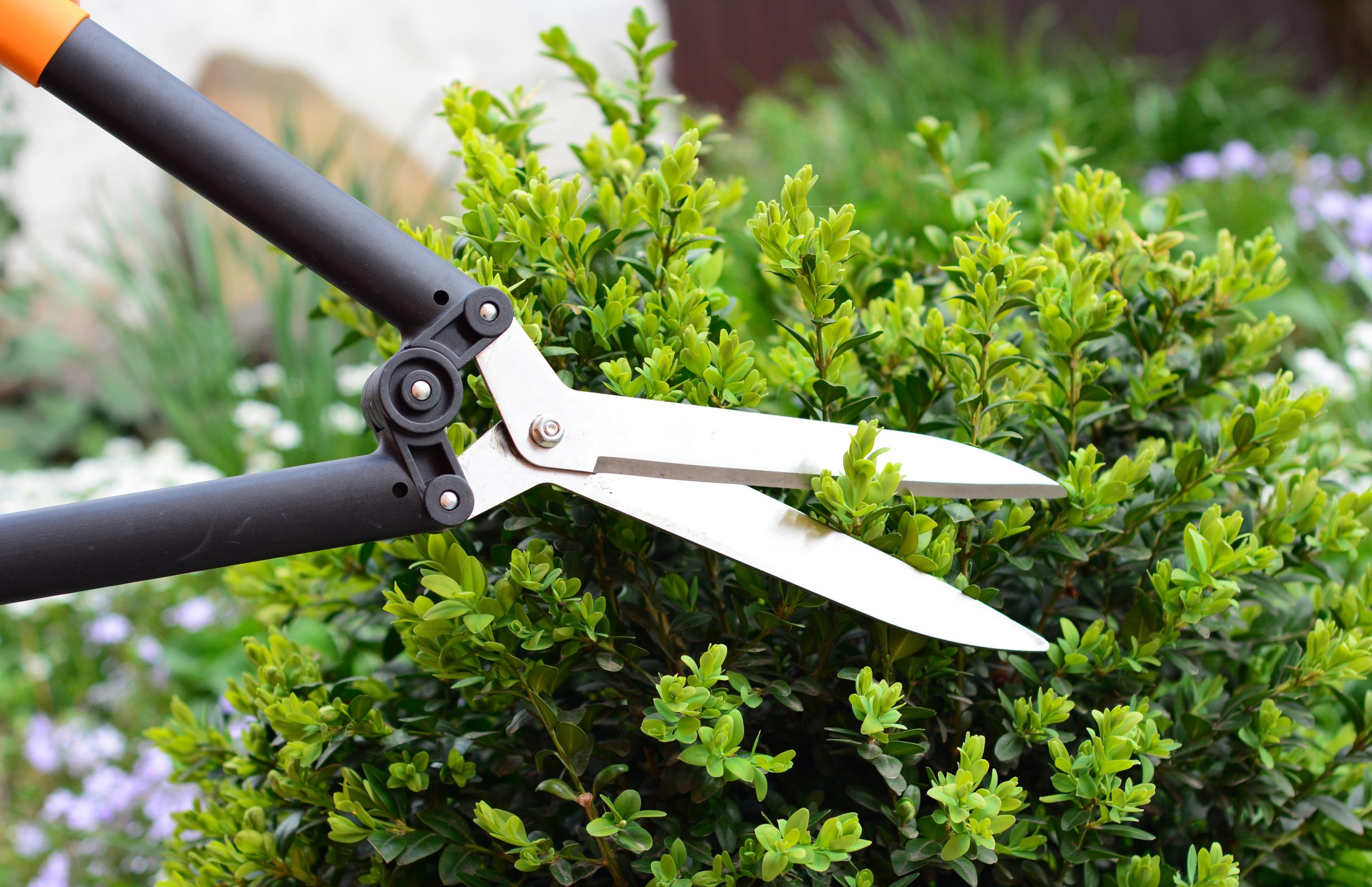Pruning shrubs is a fundamental practice in gardening that promotes healthy growth, enhances the aesthetic appeal of your landscape, and ensures the longevity of the plants on your property. By trimming away overgrown or damaged branches when necessary, you can rejuvenate your shrubs and encourage the development of new, vibrant foliage. Pruning can be a daunting operation for many gardeners, but it doesn’t have to be. Below are some useful tips and guidelines to keep in mind as you look to tame unruly shrubs. So grab your pruners and let’s get started.
Use the Right Tools
Ask yourself why you are pruning a shrub and if it is necessary. Many plants develop a natural form that requires little pruning if planted in the right location. That being said, there are many reasons it may be necessary to prune shrubs including improving the plant’s overall shape, improving flowering, encouraging re-blooming, rejuvenating an overgrown shrub, or maintaining topiary or formal hedges. Investing in quality pruning tools is essential for achieving clean and precise cuts. Make sure you have a pair of sharp pruners for smaller branches and a lopper or pruning saw for thicker branches. Dull pruners can tear plant material leading to unnecessary stress which can be an invitation to disease and pests. It’s a good habit to clean your pruners before and after any pruning operation.
Timing is Key
Timing plays a crucial role in the success of your pruning endeavors. It’s important to know the optimal time to prune specific shrubs, as it can vary depending on their growth habits and flowering patterns. For deciduous shrubs, it’s generally best to prune them during late winter or early spring before new growth appears. Evergreen shrubs, on the other hand, can be pruned in late winter or early spring or after their spring growth flush. The general rule of thumb is to prune flowering shrubs that bloom on new wood (the current year’s growth) in the spring. This would include common plant material such as butterfly bush, smooth and panicle hydrangeas, rose of Sharon, potential, and many roses. Do not prune any early flowering shrubs that bloom on old wood (last year’s growth) in the springtime. Doing so will remove the flower buds and dramatically reduce your shrub’s potential. Common shrubs in this group include azaleas, forsythia, lilac, quince, ninebark, and weigela.
Promote Air Circulation and Shape
You want to prune back to just above a big bud or set of buds. The bigger the bud you cut back to, the thicker and more vigorous the resulting new growth will be. Begin by removing any dead, damaged, or diseased branches. These not only detract from the overall appearance of the shrub but can also hinder its growth and health. Pruning for shape and air circulation is crucial for maintaining the health of your shrubs. Remove any crossing or rubbing branches that may cause damage or prevent proper airflow. Aim to create an open, vase-like structure that allows sunlight to penetrate the shrub, reducing the risk of disease and encouraging even growth.
Don’t Overdo It
Pay attention to the smaller details when pruning shrubs. To prevent the spread of diseases, sanitize your pruning tools with a solution of 10% bleach or rubbing alcohol before and after each use. Additionally, consider applying a thin layer of horticultural pruning sealant to large cuts or wounds to promote healing and protect the plant from pests and pathogens. While pruning is essential, it’s important not to over-prune your shrubs. Avoid excessive removal of foliage, as it can weaken the plant and leave it vulnerable to stress and diseases. Your goal should be to remove no more than one-third of the overall shrub. Remember, you can’t stick a pruned branch back on!
Chapel Valley is Here to Help With Your Commercial Landscaping
Pruning shrubs is an art that requires knowledge, patience, and practice. Remember to consider the specific needs and growth habits of your shrubs, use proper tools, and practice moderation when removing branches. If you need an expert landscaping team at your disposal specializing in property management, office buildings, and commercial real estate.

